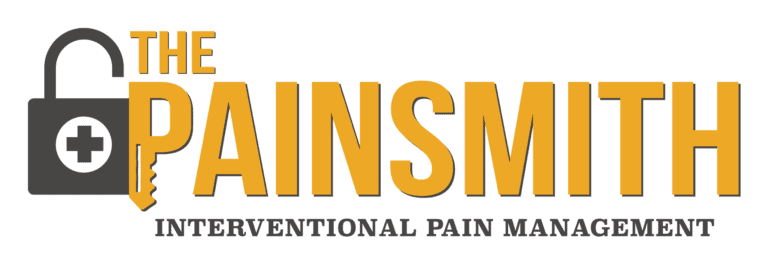Pain is a very common symptom in cancer patients – nearly half of cancer patients report experiencing pain. In those that do have pain, it can be mild, moderate or severe. Younger patients tend to be more likely to have cancer pain and experience pain flares than older patients. Patients with advanced cancer may have pain that is more severe, and cancer survivors sometimes have pain that continues even after their cancer treatment is completed.
Pain can be caused by the cancer itself, the cancer treatment, or a combination of different factors. Tumors, surgery, intravenous chemotherapy, radiation therapy, targeted therapy, therapies such as bisphosphonates, and diagnostic procedures may all cause pain during the diagnosis, progression, and treatment of cancer. If your cancer pain is making it hard to take care of yourself, limiting your daily activities or preventing you from sleeping – you don’t need to suffer. Your healthcare team can make a plan to manage your cancer pain.
Each patient’s cancer pain is unique, and treatment plans for pain management should be tailored to the needs of the individual. It is important to have your pain properly evaluated so your care team can suggest the best methods for treatment. The type, severity, and location of the pain, as well as the preferences and lifestyle of the patient, and any allergies and potential drug interactions will influence the pain management approach a doctor will recommend.
The good news is that cancer pain is very treatable. About nine out of 10 cancer pain patients are able to find relief using a combination of medications and therapies. Although many patients assume opioids are the only option, there are many different ways to help manage pain and increase quality of life. In this blog post, Dr. Smith discusses the different causes of and options for management of cancer pain.

What causes cancer pain?
Cancer is a destructive force within the body. Your pain can be caused by the cancer itself, or it can happen if the cancer grows into or destroys nearby tissue. A growing tumor can press on nerves, bones or organs, or release chemicals that can cause pain. Some pain happens when cancer affects your bones, nerves and soft tissues. Some people with cancer also have what providers call “phantom pain” or “referred pain.” Treating the cancer can help the pain in these situations. However, the cancer treatments themselves, including surgery, radiation and chemotherapy, can also cause their own painful side effects.
Types of cancer pain include:
- Bone pain: Bone pain from cancer may feel like a dull ache or throbbing pain.
- Nerve pain: If a cancerous tumor puts pressure on your nerves or spinal cord, you may experience pain. Nerve pain may also happen if cancer treatment causes nerve damage. This type of pain may feel like burning, shooting, or tingling.
- Soft tissue pain: Cancer that affects your organs or soft tissues may cause sharp pain, cramping pain, throbbing pain or an ache. “Soft tissue” includes your tendons, muscles, skin and/or fat.
- Phantom pain: Experiencing pain in a part of your body that’s been surgically removed to eliminate a cancerous tumor is known as “phantom pain” For example, people who have a mastectomy may have pain where their breast used to be.
- Referred pain: You may notice pain in one area of your body that’s caused by cancer in another area of your body. For example, cancer in your liver can cause swelling that presses on nerves and causes right shoulder pain.
Medication Treatments
Treatment of cancer pain usually begins with over-the-counter medications such as acetaminophen or ibuprofen. If these are insufficient for moderate to severe pain, prescription-strength medications may be necessary, but should be used with caution and be closely monitored by your provider.
Steroid Injections
Steroids like triamcinolone and dexamethasone can mimic your body’s natural response to inflammation and help ease more severe joint pain from arthritis or pain from herniated discs or spinal cord compression. However, like non-steroidal anti-inflammatory drugs, steroids can mask fever or suppress the immune system. So, in some cases, they may not be recommended for patients on immunotherapy or clinical trials.
Neurological Surgical Techniques for Cancer Pain
Pain pumps: A catheter placed in your lower spine that delivers pain medication directly to your spinal fluid. This treatment eases pain without causing some of the side effects, such as drowsiness or constipation, which may happen when you take oral or intravenous pain medication. Pain pumps can also lead to side effects such as itching or urine retention.
Spinal Cord Stimulators: Some people may have nerve pain after surgery. In this case, a Spinal Cord Stimulator may be appropriate. Spinal Cord Stimulators are implanted devices used to relieve the pain signals that are being communicated through the spinal cord. Pain is reduced because the electrical pulses modify and mask the pain signal from reaching your brain. Stimulation does not eliminate the source of pain, it simply changes the way the brain perceives it. Spinal cord stimulation (SCS) is used most often after nonsurgical pain treatment options have failed to provide sufficient relief.
Medical Procedures to Block Pain Signals
Nerve blocks: A local anesthetic is injected in order to block a group of nerves from feeling pain. The medicine goes into or around nerves in that area, stopping your nerves from sending pain messages from the local area to your brain. Nerve blocks can offer short-term relief from pain, and they work best for pain that is concentrated in a smaller area.
Radiofrequency ablation: This procedure uses heat to destroy tissue. It treats pain by sending radio waves through a precisely placed needle to heat an area of the nerve. The heat keeps your nerve from sending pain signals to your brain.
Epidural catheters: Similar to a pain pump, epidural catheters deliver pain medication that keeps your nerves from sensing pain. To place an epidural catheter, providers implant a very thin flexible tube into the epidural space in your spine. The catheter delivers ongoing doses of pain medication.
Alternative Treatments for Cancer Pain
There are many alternative treatments that can help with cancer pain relief during any stage of treatment. These methods are used in combination with traditional pain management treatments to improve overall outcomes.
These treatments can help during procedures, with pain after procedures, and with some types of chronic (long-term) pain.
Treatments include:
- Relaxation Therapy
- Meditation
- Movement Therapies
- Acupuncture
- Massage Therapy
If you have cancer, you may be concerned about being able to manage your pain. It’s important to share your concerns with your healthcare team so they are better able to assist you. Like the treatment of cancer itself, it’s much easier for providers to treat cancer pain at the start than to manage severe, uncontrolled cancer pain.
If you have back pain, joint pain, neck pain, or any other type of pain, give us a call or you can request a consultation and we’ll discuss your options.
